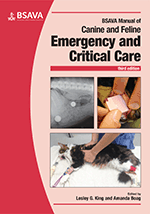
Full text loading...

This chapter provides an overview of the potential benefits of nutritional support for the critical patient, demonstrates how to assess whether a patient should be considered a candidate for nutritional support, illustrates methods of providing nutrition to patients unable or unwilling to nourish themselves and suggests methods for monitoring these patients to avoid or address complications.
Nutritional support of the critical patient, Page 1 of 1
< Previous page | Next page > /docserver/preview/fulltext/10.22233/9781910443262/9781910443262.22-1.gif

Full text loading...




